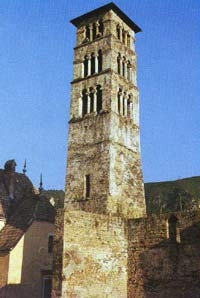Web catalog
Most read
Most read last 7 days
Most Discussed
Top rated
Statistics
- Total registered users: 9800
- Total articles: 23656
- Total comments: 2087
- Last entry: Kebo presenting evidence that Izetbegovic brought mujahideen to Bosnia
- Last update: 11.01.2019. 23:44
Jajce
Written 01.12.2009. 11:52
 JAJCE - a town in middle Bosnia on confluence of the river Pliva to the Vrbas. It is mentioned for the first time in written documents in 1396. Bosnian and Croat noble duke Hrvoje Vukcic Hrvatinic possessed it and around the middle of the 15th century he relinquished it, as a gesture of vassal loyalty, to the King. In 1463. Jajce fell to the conquering Ottoman Turks; however, towards the end of the year Hungarian-Croatian King Matijas Korvin wrested it from the Turks and founded the Jajce Banovina/County to defend the city against the Turks. At the turn of 1527/28. it is again taken over by the Turks and the city itself loses much of importance so that the fortress walls are considerably ruined in the 17th century. The city is completely destroyed in great fire (1658), and after that it is only partially restored, so that fortresses of Jajce had been in dilapidated state until the 2nd half of the 19th century, when more extensive conservatory works on citadel and on the tower of St. Luke have been conducted.
JAJCE - a town in middle Bosnia on confluence of the river Pliva to the Vrbas. It is mentioned for the first time in written documents in 1396. Bosnian and Croat noble duke Hrvoje Vukcic Hrvatinic possessed it and around the middle of the 15th century he relinquished it, as a gesture of vassal loyalty, to the King. In 1463. Jajce fell to the conquering Ottoman Turks; however, towards the end of the year Hungarian-Croatian King Matijas Korvin wrested it from the Turks and founded the Jajce Banovina/County to defend the city against the Turks. At the turn of 1527/28. it is again taken over by the Turks and the city itself loses much of importance so that the fortress walls are considerably ruined in the 17th century. The city is completely destroyed in great fire (1658), and after that it is only partially restored, so that fortresses of Jajce had been in dilapidated state until the 2nd half of the 19th century, when more extensive conservatory works on citadel and on the tower of St. Luke have been conducted.Around the 12th century there were few edifices of secular and sacral nature, for example the Romanesque style church in the place of the younger Gothic church of St. Mary. Another Romanesque edifice stood in the lower part of the city while a Romanesque relief plate was found on Carevo Polje. A great wall around the settlement was built in the 13th and at the begining of the 14th century. The wall is considerably fortified and at the same time a court in forms characteristic for retarded Romanesque architecture is constructed. A hall containing two floors is chiseled underground next to Medvjed kula/Bear's tower. It is known under the name of Katakombe and was probably intended as a space for rituals of the Dragon order. According to the coat of arms at the entrance hall, the space was chiseled by order of duke Hrvoje maybe towards the end of his life because the work remained incompleted. Approximately at the same time Franciscan friars erect on the ruins of the Romanesque church the monastery of St. Mary; however, they retain Romanesque west portal of the older edifice above which they insert a Gothic rosette.
The tower of Saint Luke is added on North- Eastern side of the church around 1460. The tower was constructed in the lower parts in Gothic manner while 3 upper galleries were formed as Romanesque triforium. Around the 15th century a royal court was built on citadel in Venetian - Dalmatian manner of late Gothic style, close to the workshop of Split-based Croatian sculptor Andrija Alesi. A solemn Gothic portal with Bosnian King's Stjepan Tomasevic's coat of arms is erected on the entrance of the citadel. The court is enlarged with annexes stylized in the manner of late medieval Gothic architecture of the first decades of the 16th century. In the Turkish period the St. Mary's church is altered into a mosque, and the tower of St.Luke was turned into a minaret. The royal court remained as a ruin during the 17th century and it was completely destroyed towards the end of the 18th or at the beginning of the 19th century.
























































 Kontaktirajte nas
Kontaktirajte nas
No comments